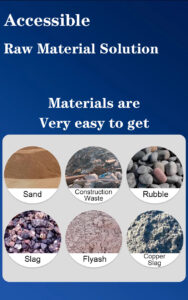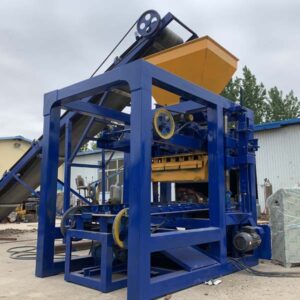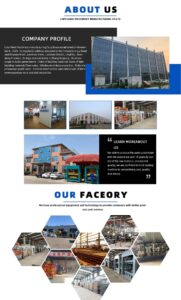
In the African continent, the demand for bricks as a fundamental building material is constantly growing, driven by the expansion of infrastructure, housing, and commercial projects. However, the production of bricks often poses challenges related to the availability and quality of raw materials, as well as the need to conserve resources and minimize environmental impact. This article explores strategies for manufacturing high-quality bricks in African countries while efficiently utilizing raw materials.
Strategies for Producing High-Quality and Resource-Efficient Bricks in African Nations
Firstly, it is crucial to identify and assess the locally available raw materials for brick production. In Africa, various natural resources such as clay, shale, and laterite can be used as raw materials for brick manufacturing. A detailed geological survey should be conducted to map out the distribution and quality of these materials. This information is vital for selecting the most suitable raw materials and optimizing the brick-making process.
Once the raw materials are identified, the next step is to develop a processing strategy that maximizes the utilization of these resources. This involves techniques such as proper mixing, shaping, and firing of the bricks. Mixing the raw materials in the correct proportions is essential to ensure the desired physical and mechanical properties of the bricks. The use of additives or stabilizers can also be explored to improve the quality of the bricks without compromising on resource efficiency.
Shaping the bricks is another critical step. Traditional methods of hand molding can be labor-intensive and inconsistent in terms of quality. Therefore, the introduction of mechanized shaping equipment can significantly improve production efficiency and ensure uniformity in brick size and shape. This not only enhances the quality of the bricks but also reduces the waste generated during the manufacturing process.
Firing is the final step in the brick-making process, and it is crucial for achieving the desired strength and durability. Efficient firing techniques, such as the use of kilns with good insulation and controlled temperature profiles, can minimize the consumption of fuel and reduce the environmental impact of the production process. Additionally, the recovery and reuse of heat from the kiln exhaust can further enhance energy efficiency.
Beyond the traditional brick-making methods, African countries can also explore innovative technologies and alternative materials to enhance the quality and efficiency of brick production. For instance, the use of waste materials such as fly ash, industrial slags, and agricultural residues as raw materials for brick manufacturing can not only reduce the dependency on natural resources but also contribute to waste reduction and recycling.
Moreover, the application of modern manufacturing techniques like extrusion molding and automated production lines can significantly improve the quality and consistency of bricks while reducing labor costs and production time. These techniques can also facilitate the production of bricks with specialized properties, such as those with improved thermal insulation or water absorption characteristics, meeting the demands of specific construction applications.

In addition to technological advancements, it is essential to establish a robust quality control system to ensure the consistent production of high-quality bricks. This involves regular testing of raw materials, intermediate products, and final bricks to ensure they meet the required standards. The establishment of quality control laboratories and the training of personnel in brick quality assessment are crucial for maintaining the desired quality levels.
Furthermore, collaboration and knowledge sharing among brick manufacturers, research institutions, and government agencies can accelerate the development and adoption of innovative brick-making technologies in Africa. By pooling resources and expertise, these stakeholders can jointly address the challenges faced in brick production and promote sustainable development in the building materials sector.
In conclusion, the production of high-quality and resource-efficient bricks in African countries requires a multifaceted approach. It involves the identification and optimal utilization of locally available raw materials, the adoption of efficient processing techniques, the exploration of innovative technologies and alternative materials, and the establishment of robust quality control systems. By implementing these strategies, African nations can not only meet the growing demand for bricks but also contribute to sustainable development and environmental protection.

